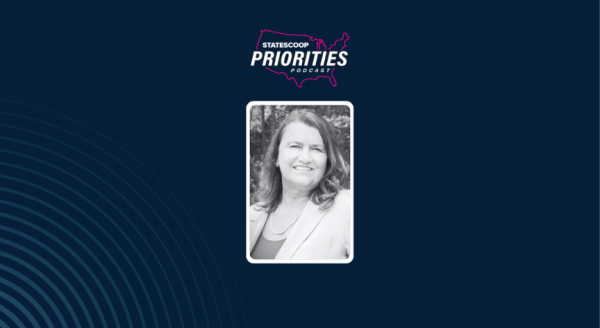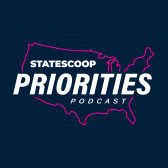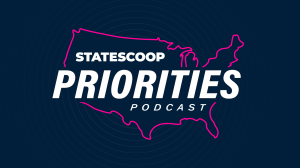
States centralizing IT must demonstrate value, CIOs say
As state governments increasingly centralize their IT organizations, the job of ensuring the continuity of business operations and the security of thousands of various computer systems may become more familiar to CIOs, but no simpler.
In the latest episode of StateScoop’s Priorities podcast, Michael Leahy, secretary of Maryland’s Department of Information Technology, points out that while each state is different, there is plenty they can learn from one another about how to manage an enterprise-wide IT organization.
“As we’ve all heard many times, if you’ve seen one state, you’ve seen one state,” Leahy says on the podcast. “We are a very federated system with policy controlled out of our central IT organization and certain infrastructure. We control the network, certain aspects of oversight over major projects that occur that are more expensive and multi-year than typical day-to-day operations projects.”
Joining Leahy on the podcast is Curtis Wood, chief information officer of Massachusetts, who explains that after an IT reorganization ordered by Gov. Charlie Baker in Aug. 2017, the role of technology in Maryland was lifted to the governor’s Cabinet with a mandate to improve efficiency and reduce waste.
“But more importantly [it was] really to invest in the IT infrastructure, the IT services of the state, to really deliver better services and focus on our cybersecurity framework, our ability to deliver modern IT environment to our constituents and to our stakeholders,” Wood says. “The call was really to centralize a lot of the services.”
Each state IT enterprise may be different and come with unique challenges, but some challenges are universal, particularly when it comes to managing people and their resistance to change. In Maryland, Leahy says the state has taken over complete IT control for smaller agencies that don’t have the capacity to run their own IT shops, while medium and large agencies procure services from his department using a charge-back model the state recently began using.
“We believe [the charge-back model] will demonstrate to folks the actual efficiencies associated with standardization and consolidation. And we’ve already had some good luck with that,” Leahy said.
In Massachusetts, Wood said there are security standards and enterprise policies in place, but ultimately the successful execution of enterprise-wide governance comes down to holding routine meetings with stakeholders, building relationships and listening.
“Really it’s a collaboration with our folks, understanding we’re not trying to just be this state IT organization that is in charge of the world, even though we certainly have that authority,” Wood said. “I’ve been in government for 40-plus years and I come from a public-safety background, and what I’ve found is each one of our organizations is different. So when we talk about just having a central IT organization that does it all, I find that that’s not really a reasonable approach or a successful approach. I think we need to recognize and respect and understand that each one of our 150 agencies at the executive level are all a little bit different.”
On this podcast:
- Michael Leahy, technology secretary, Maryland
- Curtis Wood, chief information officer, Massachusetts
- Colin Wood, managing editor, StateScoop
Things to listen for:
- Leahy says there are lots of opportunities to provide standardized tools to agencies.
- The job of the CIO is never truly done, Leahy says, but rather he continues to iterate on past progress and continue to improve how the state government operates.
- Wood chronicles the state’s recent IT reorganization, from Gov. Baker’s mandate to an initiative in 2018 and 2019 to move more IT personnel to the level Cabinet.
- Leahy shares his thinking on how to solve the problem of data silos and the impediment they present to business strategy.
- Wood says it’s not enough to build a security program, but that it must become the DNA of the commonwealth.
- Leahy outlines his state’s use of technology business management.
Produced in partnership with the National Association of State Chief Information Officers, Priorities dives deep into each of the top 10 priorities of state CIOs outlined in NASCIO’s annual list.
Listen to archived episodes of Priorities from Season 4 (2019), Season 3 (2018), Season 2 (2017) and Season 1 (2016). Catch all of StateScoop’s podcasts on Soundcloud, Apple Podcasts, Spotify, Google Play, Stitcher or Alexa’s TuneIn.


